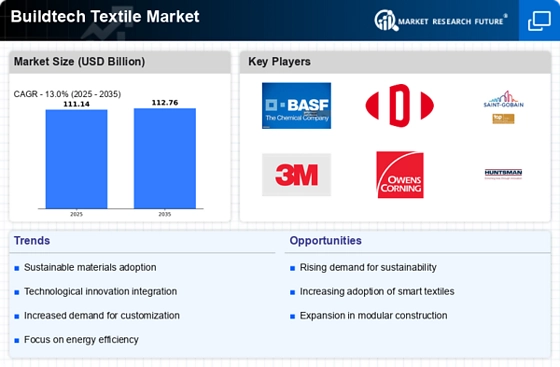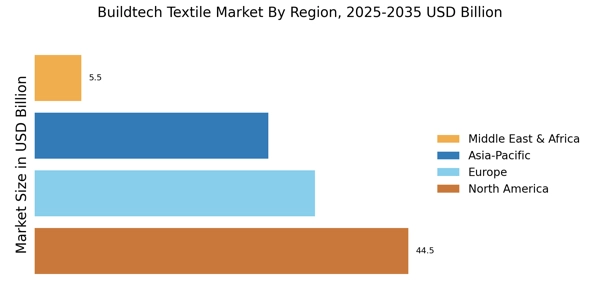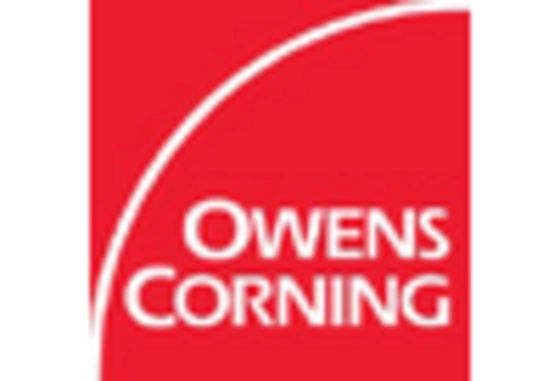Sustainable Construction Practices
The Buildtech Textile Market is experiencing a notable shift towards sustainable construction practices. This trend is driven by increasing awareness of environmental issues and the need for eco-friendly materials. As a result, manufacturers are focusing on developing textiles that are not only durable but also biodegradable and recyclable. The adoption of sustainable materials is projected to grow at a compound annual growth rate of approximately 8% over the next five years. This shift not only meets regulatory requirements but also appeals to environmentally conscious consumers, thereby enhancing market demand. Furthermore, the integration of sustainable practices in construction projects is likely to create new opportunities for innovation within the Buildtech Textile Market.
Expansion of the Construction Sector
The expansion of the construction sector is a pivotal factor influencing the Buildtech Textile Market. As urbanization accelerates and infrastructure projects increase, the demand for textiles used in construction applications is expected to rise. The construction industry is projected to grow by 5% annually, creating a substantial market for textiles that cater to various building needs. This growth is likely to drive innovation in textile applications, including fire-resistant and weatherproof materials. Consequently, the Buildtech Textile Market stands to benefit from this expansion, as manufacturers seek to meet the evolving demands of the construction sector.
Rising Demand for Energy-Efficient Buildings
The rising demand for energy-efficient buildings is a significant driver for the Buildtech Textile Market. As energy costs continue to rise, there is a growing emphasis on constructing buildings that minimize energy consumption. Textiles that offer thermal insulation and energy-saving properties are becoming increasingly sought after. The market for energy-efficient building materials is projected to grow at a CAGR of 10% through 2028, reflecting a strong trend towards sustainability. This demand is likely to encourage manufacturers within the Buildtech Textile Market to innovate and develop textiles that meet these energy efficiency standards, thereby enhancing their market position.
Regulatory Support for Green Building Initiatives
Regulatory support for green building initiatives is significantly influencing the Buildtech Textile Market. Governments are increasingly implementing policies that promote sustainable building practices, which often include the use of eco-friendly textiles. Incentives such as tax breaks and grants for projects that meet green certification standards are encouraging builders to incorporate sustainable materials. This regulatory environment is expected to propel the market for sustainable textiles, with projections indicating a potential increase in market size by 15% over the next few years. As regulations continue to evolve, the Buildtech Textile Market is likely to adapt, leading to further innovation and growth.
Technological Advancements in Textile Manufacturing
Technological advancements are playing a crucial role in shaping the Buildtech Textile Market. Innovations such as 3D printing, nanotechnology, and smart textiles are revolutionizing the way textiles are produced and utilized in construction. For instance, the introduction of smart textiles that can respond to environmental changes is gaining traction. These textiles can potentially enhance energy efficiency in buildings, thereby reducing operational costs. The market for smart textiles is expected to reach USD 5 billion by 2027, indicating a robust growth trajectory. As these technologies become more accessible, they are likely to drive the demand for advanced textiles in the Buildtech Textile Market, fostering a competitive landscape.


















Leave a Comment